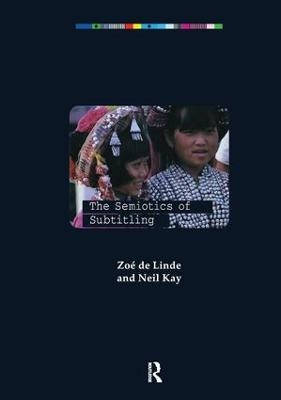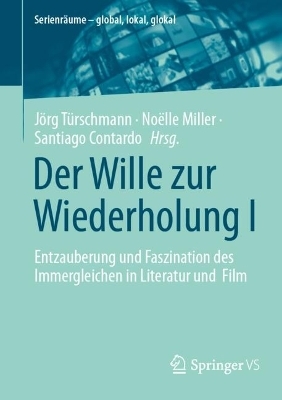
The Semiotics of Subtitling
Routledge (Verlag)
978-1-138-13990-9 (ISBN)
Focusing primarily on intralingual subtitling, The Semiotics of Subtitling adopts a holistic approach, combining linguistic theory with empirical eye-movement analysis in order to explore the full depth of the medium and the reading behaviour of viewers.
De Linde, Zoe; Kay, Neil
Chapter 1: Subtitling and Audio-visual Language Transfer
1.1. The context of subtitling
1.2. A typology of audio-visual language transfer
1.3. Analysis of subtitling
1.4. Linguistic background
1.5. The audio-visual dimension
1.5.1. Spatial restrictions
1.5.2. Temporal restrictions
1.5.3. Synchronization
1.6. Summary
Chapter 2: Intralingual Subtitling
2.1. Introduction
2.2. Importance of subtitling
2.3. Technical description of subtitling
2.3.1. Deaf and hard-of-hearing viewers
2.4. Subtitling for deaf and hard-of-hearing viewers
2.4.1. Representing the phonological component
2.4.1.1. Emphasis and phrasing
2.4.1.2. Tone of voice
2.4.1.3. Accents and foreign languages
2.4.1.4. Humour
2.4.2. Subtitling the non-verbal component
2.4.2.1. Sound effects
2.4.2.2.Music
2.4.3. Subtitling in a dynamic medium
2.4.3.1. Locating and identifying speakers
2.4.3.2. Timing and synchronization
2.4.3.3. Leading and lagging
2.4.3.4. Shot changes
2.4.3.5. The need for research
2.5. Proposed research
2.5.1. Analysis of subtitling standards
2.5.2. Transfer of language
2.5.3. Reading characteristics of viewers
2.5.4. Analysis of viewing behaviour
2.6. Summary of objectives
Chapter 3: Reading Characteristics of Deaf and Hard-of-hearing Viewers
3.1. Introduction
3.2. The concept of inner-speech
3.2.1. Electromyographic recording (EMG)
3.2.2. Concurrent vocalization
3.2.3. Homophonic reading
3.3. Deaf readers
3.4. Recoding strategies among the deaf
3.4.1. Articulatory codes
3.4.2. Dactylic (fingerspelling)
3.4.3. Sign language
3.4.4. No recoding
3.5. The role of recoding in comprehension
3.6. Summary
Chapter 4: The Integration of Text and Film
4.1. Introduction
4.2. Textual features
4.2.1. Language style
4.2.2. Text cohesion
4.2.3. Referential cohesion
4.2.4. Substitution and Ellipsis
4.2.5. Conjunction
4.2.6. Lexical cohesion
4.2.7. Text cohesion and subtitles
4.3. Film features
4.3.1. Camera manipulation
4.3.2. Editing
4.3.3. Film features and subtitles
4.4. Summary
Chapter 5: Studying the Effect of Subtitles
5.1. Introduction
5.2. Survey method
5.3. Semi-controlled experiment method
5.4. Controlled experiment method
5.5. Summary
Chapter 6: Subtitling for Adults
6.1. Introduction
6.2. Subtitle samples
6.3. Selection and analysis procedure
6.4. Results: characteristics of subtitles broadcast for adults
6.4.1. Synchronicity between subtitle and sound
6.4.2. Synchronicity between subtitle and image
6.4.3. Extent of editing
6.5. Summary
Chapter 7: Subtitling for Children
7.1. Introduction
7.2. Subtitle samples
7.3. Selection and analysis procedure
7.4. Results
7.4.1. Synchronicity between subtitles and sound
7.4.2. Synchronicity between subtitles and image
7.4.3. Extent of editing
7.5. Summary
Chapter 8: Analyzing Viewing Behaviour
8.1. Introduction
8.1.1. Experimental procedure
8.1.1.1. Participants
8.1.1.2. Materials
8.1.2. Procedure
8.2. Results and analysis
8.2.1. Study 1: Subtitle rate
8.2.1.1. Interactive effects of programme & subtitle
8.2.2. Study 2: Onset of speech
8.2.2.1. Main effects of group, programme, and subtitle
8.2.2.2. Interactive effect of programme and subtitle
8.2.3. Study 3: Shot changes
8.2.3.1. Main effect of programme
8.2.3.2. Interactive effect of programme and subtitle
8.2.4. Study 4: Extent of editing
8.2.4.1. Interactive effect of group & programme
8.2.4.2. Interactive effect of group & subtitle
8.2.4.3. Interactive effect of programme & subtitle
8.2.5. Study 5: Visibility of speaker
8.2.5.1. Main effect of group
8.2.5.2. Interactive effect of group & programme
8.2.5.3. Interactive effect of programme & subtitle
8.3. Summary
Chapter 9: Conclusions
| Erscheinungsdatum | 23.08.2016 |
|---|---|
| Verlagsort | London |
| Sprache | englisch |
| Maße | 174 x 246 mm |
| Gewicht | 453 g |
| Themenwelt | Schulbuch / Wörterbuch ► Wörterbuch / Fremdsprachen |
| Geisteswissenschaften ► Sprach- / Literaturwissenschaft ► Anglistik / Amerikanistik | |
| Geisteswissenschaften ► Sprach- / Literaturwissenschaft ► Literaturwissenschaft | |
| Geisteswissenschaften ► Sprach- / Literaturwissenschaft ► Sprachwissenschaft | |
| ISBN-10 | 1-138-13990-4 / 1138139904 |
| ISBN-13 | 978-1-138-13990-9 / 9781138139909 |
| Zustand | Neuware |
| Haben Sie eine Frage zum Produkt? |
aus dem Bereich


